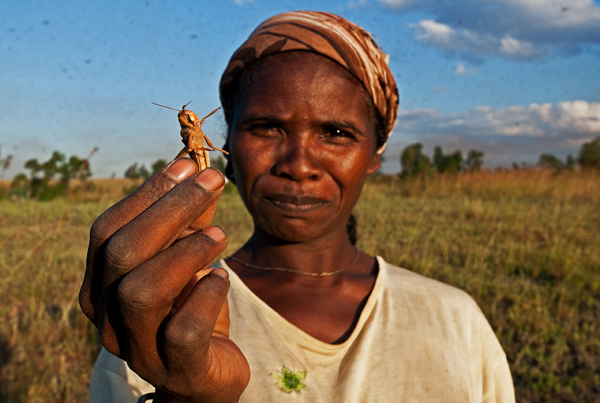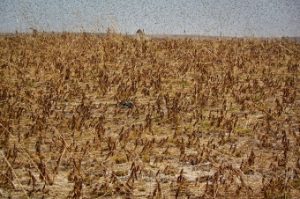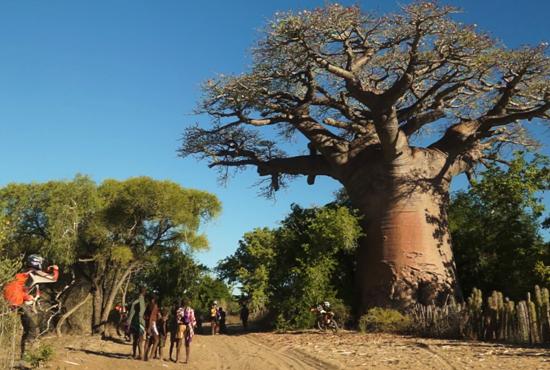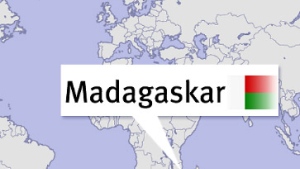
Crisis in Agriculture
When a poor country like Madagascar is hit by natural disasters, the consequences are felt for years to come. This is also because the country lacks the financial means to address the aftermath. Hunger and devastated landscapes on a devastating scale are the result of one of the largest locust plagues to ever hit the country.
In February 2013, Cyclone Haruna hit the
Grasshoppers in Madagascar: A Threat to Agriculture
Migration is a natural phenomenon for grasshoppers. These migrations are necessary for the survival of the species, but they also lead to ecologically complementary areas being colonized by the insects in uncontrollable numbers, making them unusable for agriculture. In the first months of the grasshopper plague, the swarms were so dense that the sky remained dark for hours.
Grains are also on the menu for these insects. Approximately Grains are also on the menu for these insects. Approximately Grains are also on the menu for these insects. Approximately Grains are also on the menu for these insects. Approximately Grains are also on the menu for these insects. Approximately Grains are also on the menu for these insects. Approximately Grains are also on the menu for these insects. Approximately Grains are also on the menu for these insects. Approximately Grains are also on the menu for these insects. Approximately Grains are also on the menu for these insects. Approximately Grains are also on the menu for these insects. Approximately Grains are also on the menu for these insects. Approximately Grains are also on the menu for these insects. Approximately Grains are also on the menu for these insects. Approximately Grains are also on the menu for these insects. Approximately Grains are also on the menu for these insects. Approximately Grains are also on the menu for these insects. Approximately Grains are also on the menu for these insects. Approximately Grains are also on the menu for these insects. Approximately Grains are also on the menu for these insects. Approximately Grains are also on the menu for these insects. Approximately Grains are also on the menu for these insects. Approximately Grains are also on the menu for these insects. Approximately Grains are also on the menu for these insects. Approximately Grains are also on the menu for these insects. Approximately Grains are also on the menu for these insects. Approximately Grains are also on the menu for these insects. Approximately Grains are also on the menu for these insects. Approximately Grains are also on the menu for these insects. Approximately Grains are also on the menu for these insects. Approximately Grains are also on the menu for these insects. Approximately Grains are also on the menu for these insects. Approximately Grains are also on the menu for these insects. Approximately
Grains are also on the menu for these insects. Approximately Grains are also on the menu for these insects. Approximately Grains are also on the menu for these insects. Approximately
Grains are also on the menu. The rice fields of the Malagasy people are often at risk of being invaded by swarms of locusts. A single swarm can consume up to 100,000 tons of green fodder per day and move on once the area can no longer sustain the insects. This renders the land unusable for any agricultural purposes. Thanks to their strong wings, locusts are extremely mobile and can cover vast distances. They rest when they find an area that provides them with good conditions for reproduction and lay their eggs there. The larvae hatch in high humidity and become sexually mature in just about a month and a half. Especially during the rainy season, their population can explode. During the last major locust plague in 2013/2014, the pests quickly populated over half of the island of Madagascar. They not only destroyed fields in the impoverished south of the country but also spread to the highlands and even the suburbs of the capital Antananarivo. This infestation highlighted the challenge of controlling insects without expensive insecticides.
How to deal with locusts. But how?
Untreated, a locust plague can last for more than ten years. Each year, the areas inhabited by the pests expand due to the constant increase in insect populations. Crops and pastures become permanently unproductive, and the livelihood of the population in Madagascar, one of the poorest countries in the world, is seriously threatened. 60% of the country was already affected by the locust invasion in 2013. In such crisis situations, both the government and the population of the country are overwhelmed. With a lack of resources for successful pest control, people have no choice but to…








